Friedrich Heitmann
A quiet corner in a cozy area of Kaliningrad, the rustle of the wind in the crowns of tall trees, the singing of birds. Here, next to the Evangelical Lutheran Church of the Resurrection, there used to be a small Catholic cemetery, the final resting place of a very famous person, whose architectural masterpieces still delight both Kaliningraders and guests of our city.
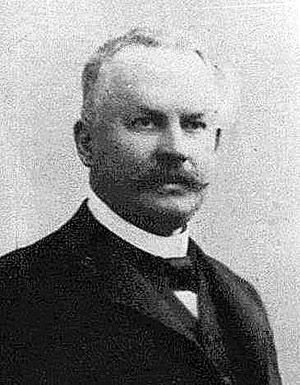
We are talking about the famous architect Friedrich Heitmann, who lived in Königsberg at the turn of the nineteenth and twentieth centuries. August 13, 2021 marks 100 years since his death.
Friedrich Heitmann lived a bright and extremely fruitful life.
Friedrich Adalbert Heitmann, who called himself Fritz, was born on October 27, 1853, in Ahlen-Westphalia. He was the son of the royal judge of first instance Eduard Heitmann from his second marriage and his wife Theresia, née Vogelsang.
After completing primary school and high school, he entered the vocational technical school in Frankenberg (Saxony). His studies lasted from 1872 to 1875, and upon graduation Heitmann successfully passed the exam and received an engineering diploma.
He completed his voluntary military service in Wesel for a year and then began his professional career as an assistant surveyor at the cadastral office in Anklam (Western Pomerania).
Some time later, Heitmann was invited to serve in the "German Imperial Post and Telegraph Administration" and was entrusted with supervising the construction work of the monumental Gothic post office building in Anklam.
From August 1877, Heitmann worked in the offices of the German Imperial Post and Telegraph in Stettin (now Szczecin), then in Swinemünde (now Swinoujscie), Rostock, Leipzig, and from there in 1886 he was transferred to Königsberg to the Supreme Post Office Directorate to manage the construction of post office buildings in Gumbinnen (now Gusev) and in Pillau (now Baltiysk).
Young Heitmann quickly realized what a vast field of activity East Prussia offered him, and settled in Königsberg as an architect. Thanks to his skill and diligence, he very soon became known both in the city and in the provinces.
His participation in the competition in 1894 for the design of the construction of the Albertina Palestra (palestra in Greek means fencing school) was significant. He won first prize in the competition. The project was entrusted to the construction advisers Wilhelm Bessel-Lork and Georg Sandmann.
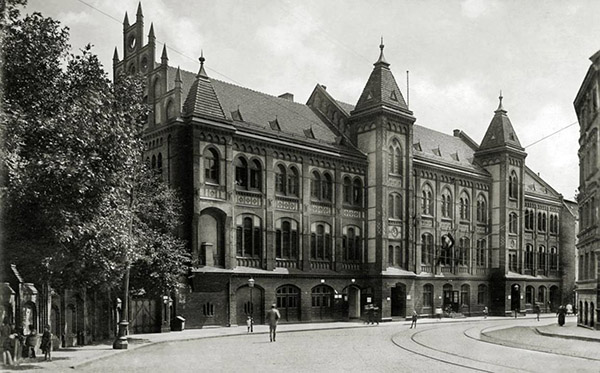
The initiator of this unique building was Dr. Friedrich Lange, a graduate of the Albertina* who emigrated to America. Having founded his own clinic there, he became famous as the "pioneer of German surgery in America" and for introducing asepsis [ asepsis is a set of measures aimed at preventing the penetration of microbes into a wound - admin ]. Being a wealthy man, he was involved in extensive charity work and in 1894 donated money for the construction of a sports facility on the occasion of the 350th anniversary of the Albertina. Upon completion of construction, the building was consecrated in 1898.
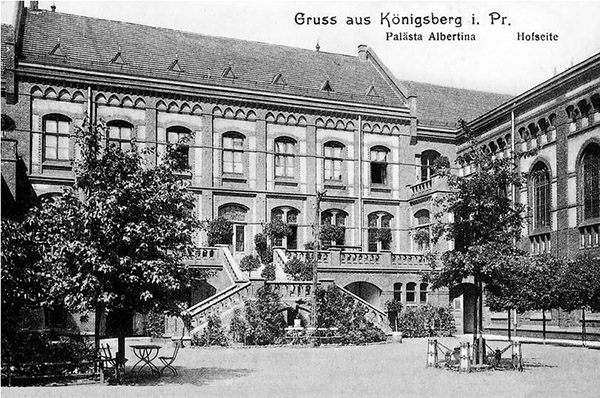
According to Heitmann's design, the Palestra Albertina included a dining room, a gymnasium, a swimming pool with a spectator stand, bathrooms and showers, a bowling alley, a fencing hall and a meeting room, as well as shops and even several apartments. This project brought him wide fame.
Heitmann, who received his education in the era of historicism, attached great importance to the Romanesque façade when designing his buildings, but at the same time declared the “order style”.
Although the Palestra building was heavily damaged by massive bombing in August 1944, it was rebuilt after the war and today serves the Baltic Fleet and the city's residents as a sports facility.
In 1901, Heitmann received the order to build a new telegraph office for Königsberg. This impressive neo-Gothic building was erected in the very center of the city on the Gesekusplatz opposite the Royal Castle.
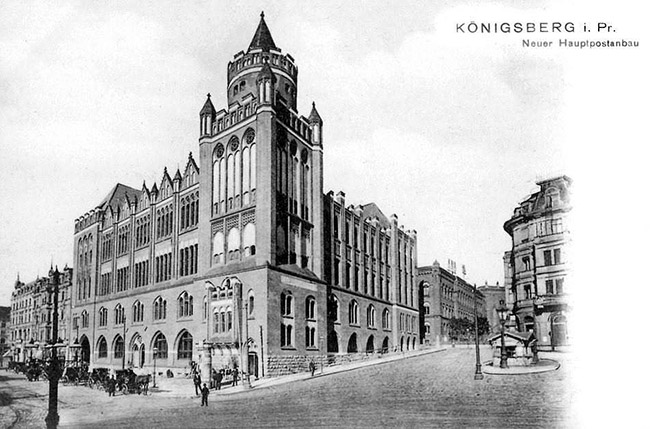
Captured in numerous photographs and postcards, it survived in 1944/45, but was demolished during the Soviet era.
Fritz Heitmann gained particular fame, first of all, as the architect of numerous Königsberg churches.
Thus, at the turn of the century, he received an order to build the Church of the Memory of Queen Louise (Luisenkirche) on Lavsker Allee, 1 (now Pobedy Avenue). This church was at the center of public interest, as it was dedicated to Queen Louise**, who was highly revered by the residents of Königsberg and all of East Prussia. In those years (1899-1901), the Prussian monarchy was still highly respected.
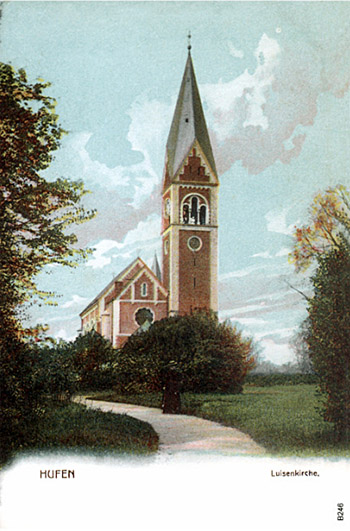
When designing the Luisenkirche, the architect placed emphasis on the Romanesque style, which, in his opinion, gave the impression of seriousness, calmness and was full of dignity. The church was built at the entrance to the Luisenwald Park, where the queen often liked to spend time. At the consecration of the church in 1901, which took place in the presence of the emperor, Heitmann received the Order of the Crown from the hands of Wilhelm II. In 1914, for his services to public construction, he received the title of "Royal Advisor for Construction".
Pope Pius X, noting the numerous church buildings in Königsberg and East Prussia, awarded Heitmann the Order of Merit for the Church and the Pope.
Today, this restored and rebuilt church serves as a venue for a puppet theatre. In 2001, on the centenary of its consecration, former Königsbergers celebrated the rare occasion of golden and diamond confirmation here. It was a touching day for all participants who had once been baptized or confirmed in this church.
A few steps further, in the Amalienau*** district, the Catholic Heitmann built the first Catholic church in this increasingly growing part of the city – the Chapel of St. Adalbert. Most of the funds for the construction of the chapel and its interior decoration were collected through donations. Heitmann himself supervised the construction work without payment. He had many personal ties to this church building.
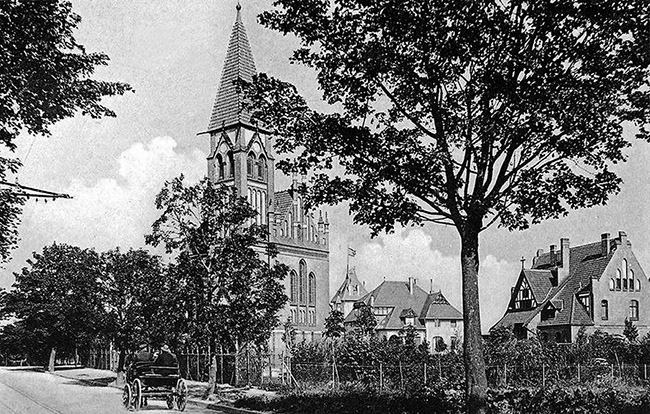
Later in 1932, the chapel was expanded and completed into the Church of St. Adalbert.
In 1904-1907, Heitmann received another order for the construction of the Catholic Church of the Holy Family, this time in the densely populated Forshtadt district (now the area to the west and east of Leninsky Prospekt between the Pregolya River and Bagration Street. — admin ) on Oberhaberberg Street, 21 (now Bohdan Khmelnitsky Street). During the war, the church suffered minor damage and was restored. Now the church is a concert hall of the Kaliningrad Philharmonic.
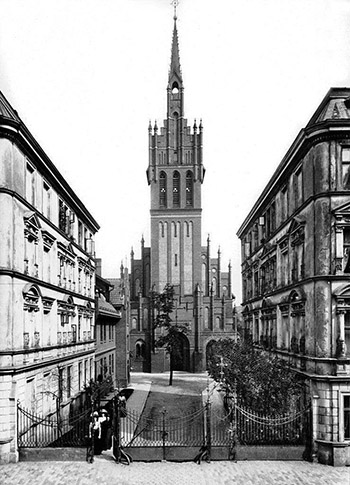
Heitmann then designed the Evangelical Lutherkirche on the Viehmarkt (now the intersection of Oktyabrskaya and Dzerzhinsky streets. - admin ) in the Renaissance style with a prominent central part. The church was consecrated in 1910. Although it was not badly damaged during World War II, it was unfortunately demolished in 1975.
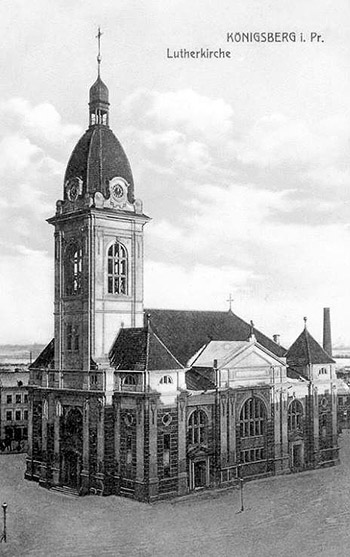
The last church building designed by Friedrich Heitmann in Königsberg was the Catholic chapel in Ponart, built in 1913, next to the St. Joseph's Orphanage.
In Chernyakhovsk, the Catholic Church of St. Bruno of Querfurt, also built by Friedrich Heitmann, has been preserved in good condition.
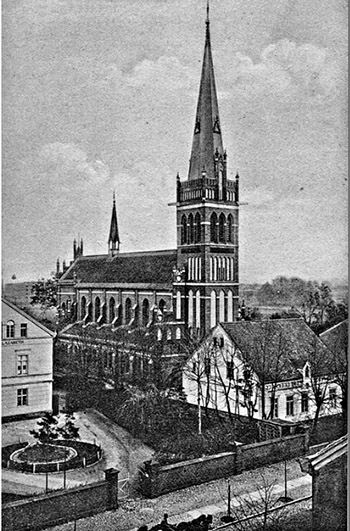
Heitmann also built many churches in the provinces. These are Catholic chapels in Tapiau (now Gvardeysk), Rastenburg (now Kętrzyn), Pillau, as well as the Church of the Heart of Christ and St. Joseph in Allenstein (now Olsztyn).
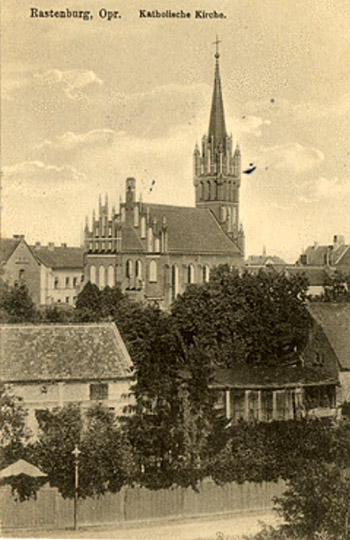
The architect's productivity was inexhaustible. In addition to the buildings already mentioned, he also built district houses in Gerdauen (now Zheleznodorozhny) and Braunsberg (now Braniewo), as well as hospitals in Gerdauen and Morungen (now Morąg).
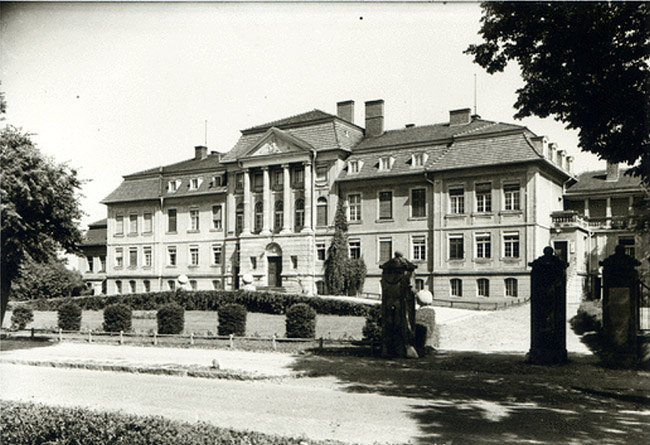
Together with his friend, construction adviser Josef Kretschmann, with the involvement of numerous private funds, Heitmann founded the "Konigsberg Society of Real Estate and Construction 1898" and immediately designed an entire settlement - the Amalienau Colony (an area in the west of Königsberg, now located within the boundaries of Krasnaya, Karl Marx, Lesoparkovaya and Pobedy Avenue streets, built up with villas for wealthy citizens in accordance with the then fashionable concept of a "garden city". - admin ).
It was well known that Heitmann was not only a good architect, but also a sensitive conversationalist, taking into account the special wishes of his clients.
In the bizarre Art Nouveau style*** with its turrets, bay windows, gables, quadrangular dormers and extensions, Heitmann designed more than a dozen villas in Amalienau. Many of the villas survived the war.
The development of Lake Zwillingsee (now Lake Poplavok, or Khlebnoye) in Amalienau, which was received from the city in 1910, also began from both friends.
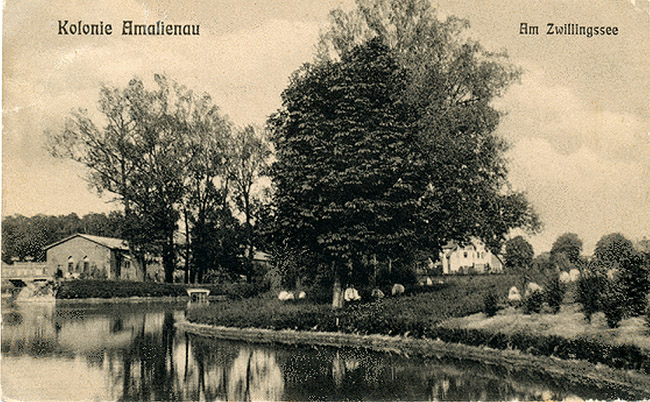
Fritz Heitmann's personal life was happy. Already a mature and accomplished man, at the age of 39, Heitmann met the daughter of the chief postal director, Anna Wächter, in Königsberg, who was 20 years younger than him. He married her in 1896. His young wife gave him a daughter in 1897, a son in 1899, and two more daughters in 1902 and 1906.
In 1904, the well-earning architect was able to build his own villa at Kastanien Allee 12 (now Chestnut Allee 16). The flag of Westphalia with a white horse on a red field fluttered on the tower of his house, as Heitmann had not lost contact with his small homeland.
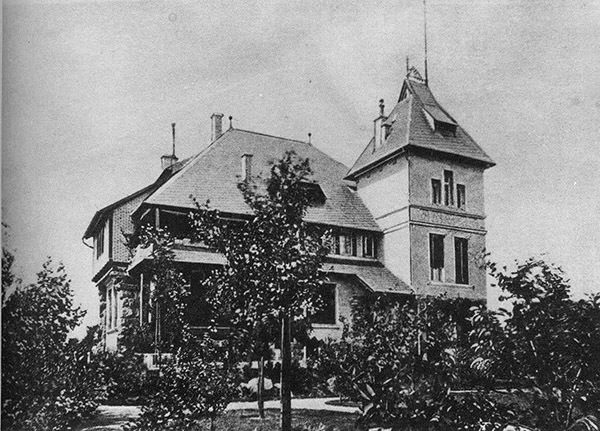
In the spacious, tastefully furnished villa, Heitmann lived out the best years of his family happiness. Many respected citizens of the city often visited his hospitable home.
One of Heitmann’s many friends was the well-known Königsberg sculptor Johann Friedrich Reusch, also a Westphalian by birth from Siegen, who created the sculpture “German Michel” in Königsberg, monuments to Duke Albrecht, Emperor Wilhelm I and Bismarck.
Heitmann's son Winfried (named after the Grand Master of the German Order, Winfried von Kniprode) told in 1939 about his father's unusual meeting with the sculptor Reusch:
"One day, Reusch meets Heitmann on the street:
- Fritz, you must come with me right now!
- Why?
- I need your trousers.
- Why?
- For my bronze statue of Bismarck.Fritz, of course, goes with him, stands on the podium, and in the blink of an eye Reusch models his trousers. It was the "draping" that he had failed so badly at. Since then, the Iron Chancellor, who stands on Kaiser Wilhelm Square in Königsberg, wears my father's trousers."
Fritz Heitmann also made great contributions to the protection of monuments in East Prussia. In the fundamental work of Adolf Bötticher****, “Architectural and Artistic Monuments of the Province of East Prussia,” there are many graphic sheets by Heitmann — churches, building interiors, pediments, bay window details, room ceilings, side walls of cathedral benches, etc. This characterizes the architect as a born draftsman.
In 1914, the First World War began, and Heitmann, who was almost 61 years old, went to fight as a militia company commander, taking part in the Battle of Tannenberg. In November 1914, he was awarded the Iron Cross 2nd class. Exhausted by the hardships of war, he suffered a severe heart attack and was sent to the hospital in Königsberg. Despite all the efforts of doctors, Heitmann never fully recovered. He needed constant care and was therefore forced to leave the service. At the same time, his professional activity also ceased, his architectural bureau was dissolved.
In order to somehow survive during these difficult times, Heitmann was forced to sell his villa in Amalienau in 1918 and take refuge in the rectory he designed near the chapel of St. Adalbert. Despite the selfless care of his wife and daughters, Heitmann died on August 13, 1921 and found his final resting place in the Catholic cemetery of the community of St. Adalbert on Dürerstrasse (now Lesoparkovaya Street) in the village of Ratshof (now a district northwest of the Wagon Works - the former Steinfurt wagon factory. - admin ).
Professor Baldur Koester writes about Heitmann in his book “Königsberg – Architecture in German Times”: “With the end of the First World War, not only a political upheaval occurred, but also an upheaval in the general understanding of architecture. The era that had just ended was subject to strong criticism on an emotional level. If Heitmann had died in 1914, the specialist press would have burst into praise for his achievements as an architect. When he died in 1921, however, no one was able to give him his due. He was simply forgotten.” In addition, Koester regrets, “There are no publications about Heitmann in the professional literature by his contemporaries. Now would be the time for someone to rethink his life’s work.”
Unfortunately, his grave has not survived. It was a modest monument with the dates of birth and death and the epitaph "Love never ends." These words refer to his entire life, to his love for his family, to his extraordinary love for his work, which is clearly visible in the appearance of all his numerous creations.
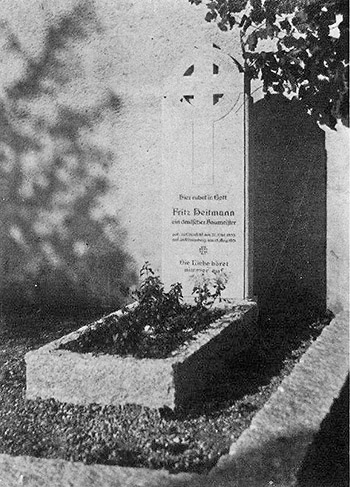
At present, all the surviving buildings of Friedrich Heitmann are rightfully considered the adornment of Kaliningrad and the region and attract great attention from connoisseurs of beauty.
Notes:
* Albertina - Königsberg University (German: Albertus-Universität Königsberg), founded by Duke Albrecht of Hohenzollern in 1544.
** Queen Louise - Louise Augusta Wilhelmina Amalia of Mecklenburg (1776 - 1810), wife of the King of Prussia, Frederick William III.
*** Art Nouveau is the German name for the modern style.
**** Adolf Bötticher (1842-1901) - architect, archaeologist, provincial conservationist of East Prussia, author of the 8-volume work "Architectural and Artistic Monuments of the Province of East Prussia" (1892-1898).
Sources:
Lorenz Gremoni Architect Friedrich Heitmann (1853-1921) Königsberger Bürgerbrief, Duisburg
Königsberg Pr. and yours . A picture documentary by Willi Freimann, Rendsburg, 1988
Baldur Koster Königsberg Architecture from German Time , Husum Drawing, Husum, 2000
East German Bildarchiv
